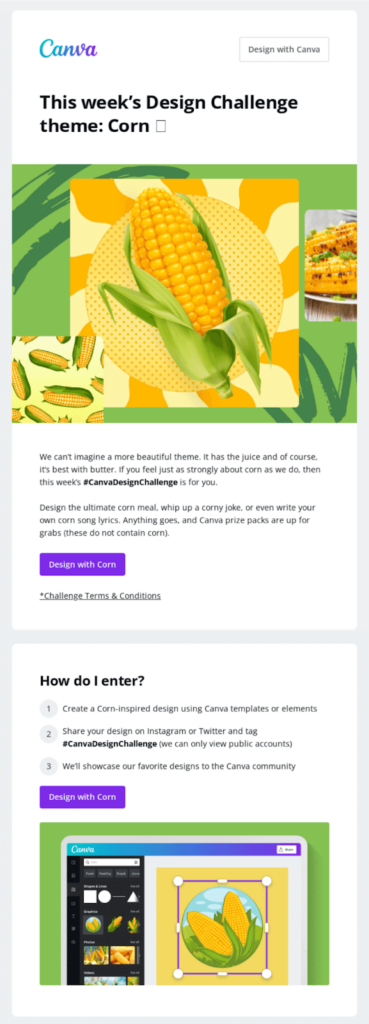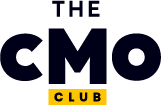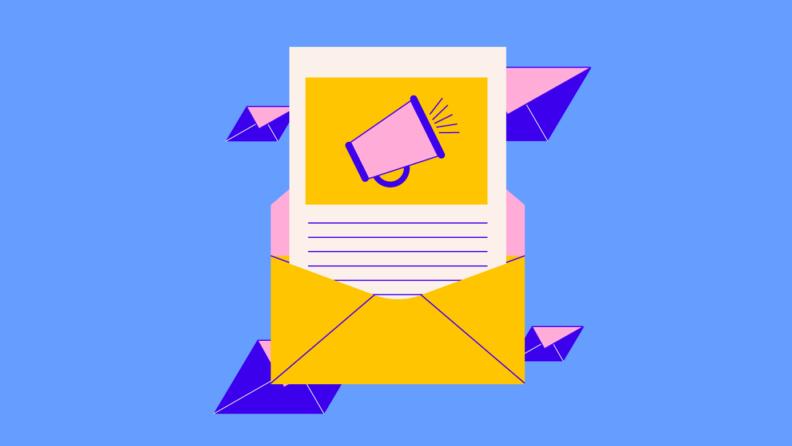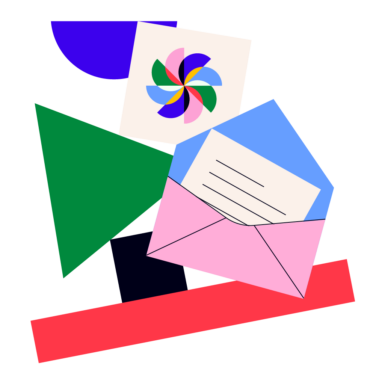Email blast marketing is the practice of sending a single email message to a large list of recipients at once.
Set clear goals and segment your contact list to maximize the impact of your email blast marketing campaigns.
Personalize content, write strong subject lines, and optimize send times to boost engagement rates.
Use email service providers for drag-and-drop templates, automation, and pop-ups to scale efficiently.
Maintain list hygiene and run A/B tests regularly to turn mass emails into high-performing marketing tools.
Email blast marketing can be a powerful tool for reaching your audience, but it comes with challenges.
If done right, it can drive engagement and conversions. However, it risks alienating your audience, tanking your email marketing program, and damaging your brand reputation if done wrong.
In this article, we'll explore the value of email blast marketing and the dangers of doing it wrong. We will also provide a step-by-step guide to help you execute successful email campaigns.
What is Email Blast Marketing
Email blast marketing involves simultaneously sending a single email message to a large group of recipients. Marketers commonly use this email strategy for promotional purposes, such as announcing sales, promoting new products, or sharing company news.
But, that Sounds Like Spam…
You’re not wrong! Users often dislike email blasts for several reasons.
They can lack personalization, making recipients feel like just another number on a list. They can also be unexpected or irrelevant to the recipient's interests. Plus, unsegmented or untargeted emails can come across as spammy and intrusive.
But here’s the good news: if you follow a few key steps, you can avoid the spam folder altogether and also deliver value. Below, I’ll walk you through how to craft and send email blasts that feel relevant, timely, and welcome in your audience’s inbox.
How to Send an Email Blast in 8 Steps
To execute successful email blast marketing campaigns, follow these steps:
Step #1: Define Your Campaign Goal
Defining your campaign goal is the foundation of successful email blast campaigns. In my experience leading B2B email marketing efforts, I’ve found that clarity at this stage drives better segmentation, higher engagement, and more meaningful outcomes. A clearly defined goal gives your team direction and ensures your message aligns with what your email subscribers actually want.
When goals are specific—whether it’s increasing product trials, promoting a webinar, or re-engaging dormant users—you’ll see stronger performance metrics across the board. In fact, campaigns with a single, focused call-to-action can improve click rates by up to 371%, according to WordStream’s email marketing data source.
Start by asking: what action do you want your audience to take after reading the email? Then map your content and subject line to support that intent. This small shift transforms generic email marketing efforts into results-driven communication that respects your email subscribers’ time and attention.
Step #2: Build and Segment Your Email List
Building and segmenting your email list is the most effective way to increase the effectiveness of your bulk email campaigns. A structured contact list lays the groundwork for personalized communication and segmentation ensures you deliver content to the right audience at the right time.
According to Campaign Monitor, segmented campaigns can result in a 760% increase in revenue, proving the business impact of getting it right.
Follow these email marketing best practices to elevate your email marketing efforts by aligning them with the real needs and behaviours of your subscribers:
- Collect addresses from your website, social media channels, and other touchpoints to build a high-quality email list
- Offer incentives like discount codes, free resources, or early access to features to encourage sign-ups
- Once you’ve built your list, segment it based on demographics, behavior, interests, or purchase history
- Use data from previous interactions to create content that feels customized and timely.
- Implement multiple opt-in opportunities and obtain explicit consent under regulations like GDPR to protect you protect your sender reputation
Step #3: Create Compelling Content
High-quality emails are crucial for capturing your subscribers' attention and driving engagement. Here are some tips for writing compelling emails:
- Subject lines: Use attention-grabbing email subject lines that are relevant and compelling to your audience. This is your first (and sometimes only) chance to earn a click. In fact, 64% of recipients decide to open an email based on the subject line alone. Make it short, specific, and emotionally relevant. Use curiosity, urgency, or a benefit-driven hook, but never mislead.
- Personalized content: Personalize email content whenever possible, addressing subscribers by name and tailoring messages based on their preferences or past interactions. Studies show that personalized emails can deliver transaction rates six times higher than non-personalized ones.
- Email copy and visuals: Keep email copy concise, clear, and focused on delivering value to the recipient. Include eye-catching visuals, such as images or videos, to enhance the appeal of your emails.
- CTAs: Use strong and clear calls-to-action (CTAs) to prompt subscribers to take desired actions, such as purchasing, signing up for an event, or downloading a resource.
- Optimization: Optimize email designs for mobile devices to ensure a seamless experience across all devices.
Think of each send not as a broadcast, but as an invitation to engage. Content that respects your reader’s time, speaks to their needs, and lands at just the right moment is what sets great email marketing campaigns apart.
Step #4: Choose a Great Email Blast Service
Selecting the right email marketing software is crucial for managing your campaigns efficiently. Look for features like customizable templates, automation tools, and robust analytics to maximize your results.
Tips:
- Take advantage of free plans, trials or demos to test different platforms before committing.
- Consider factors like ease of use, pricing, customer support, and integration with other tools.
- Make sure you learn how to implement marketing automation so you can use those features to their full potential.
Step #5: Measure Results and Email Deliverability
Track key metrics like open rates, click-through rates, and conversion rates to evaluate the success of your campaigns using email analytics software. Monitor email deliverability to ensure your messages reach recipients' inboxes.
Tips:
- Analyze campaign performance to identify trends, patterns, and areas for improvement.
- Test different variables like subject lines, sender names, and send times to optimize engagement and deliverability.
- Use these metrics to analyze results and refine future targeted email campaigns.
Step #6: Regularly Clean and Update Your Email List
One email marketing tip folks don't take seriously is the habit of regularly cleaning your email list. A clean email list is essential for maintaining deliverability and engagement rates. Here's why and how to clean your email list regularly:
- Clean your email list regularly to remove invalid, outdated, or inactive addresses. Use email validation tools to identify and eliminate invalid addresses.
- Update subscriber information by periodically asking subscribers to verify their details or preferences.
- Purge inactive or unengaged subscribers from your email list to improve engagement metrics and deliverability rates.
- Set criteria for identifying inactive subscribers, such as lack of opens or clicks over a specified period.
- Consider re-engagement campaigns to try and win back inactive subscribers before permanently removing them from your list.
Pro tip: Avoid purchasing email lists or engaging in practices that result in low-quality subscribers. Use automated tools to identify hard bounces, suppress spam complaints, and monitor inactivity.
Step #7: Respect Unsubscribe Requests
Respecting unsubscribe requests is essential for maintaining a positive relationship with your audience and complying with anti-spam regulations. Here's how to handle unsubscribe requests effectively:
- Make it easy for subscribers to unsubscribe by including a clear and prominent unsubscribe link in every email.
- Honor unsubscribe requests promptly and ensure subscribers are removed from your email list within the required timeframe.
- Use unsubscribe feedback to improve your email marketing strategies and approach. Consider asking unsubscribers for feedback through exit surveys to understand their reasons for opting out.
Step #8: Run Subscriber Surveys
Gathering feedback from your subscribers through surveys can provide valuable insights into their preferences, interests, and pain points. Here's how to effectively run subscriber surveys:
- Use online survey tools to create and distribute surveys to your email list. Keep surveys short, focused, and easy to complete to maximize participation.
- Ask targeted questions about content preferences, frequency preferences, product interests, and overall satisfaction with your email communications.
- Analyze survey responses to identify trends and patterns. Use this feedback to tailor your email content, frequency, and segmentation strategies to meet subscribers' needs and expectations.
Real-World Email Blast Examples
Here are some examples to inspire your next email blast marketing campaign.
Example #1: Lead Nurturing Email
What does this entail? Consider a lead in the consideration phase who has signed up for your free trial or joined your email list but has yet to make a purchase.
In such instances, it is crucial to engage and guide them further down the sales funnel, encouraging them to upgrade to your paid plan.
This is where lead nurturing emails prove invaluable. Here are four key stages where you can utilize these email tactics effectively:
- Upselling from free to paid services
- Guiding leads through your sales or marketing funnel
- Assisting with successful onboarding
- Enhancing customer retention
Grammarly illustrates a prime example of effective nurturing emails by highlighting the benefits of upgrading to Grammarly Premium through compelling numerical insights.

Example #2: Milestone Email
Marketers have witnessed a massive surge in revenue attributed to segmented email campaigns.
Take a cue from Zapier's approach, which combines data-driven insights with a persuasive call to action.

Another great example of email personalization is acknowledging significant milestones and occasions in your users' lives. For instance, many brands now extend birthday wishes to users, but to truly stand out, consider enhancing this gesture with a special offer or personalized content.
Hulu exemplifies this by augmenting their birthday greeting with an enticing promotional offer, fostering a deeper connection with the recipient.

Example #3: Upselling Email
Upselling extends beyond persuading users to upgrade to a pricier plan; it also means promoting yearly subscription plans and illustrating the potential savings associated with such a commitment.
Moreover, encouraging users to opt for yearly subscriptions aids in securing their commitment for an entire year, contributing to a more stable revenue stream for your SaaS business.
In emails of this nature, it's vital to emphasize the yearly plan's value proposition to the user. Buffer effectively executes this strategy in its email campaigns.

Additionally, Buffer reinforces trust in its product by highlighting its money-back guarantee policy, assuring users of a refund if they are dissatisfied. This instills confidence in its tool and incentivizes users to switch to the annual subscription.
Example #4: Customer Feedback Request
Maintaining high levels of customer satisfaction is crucial for SaaS companies, as it directly impacts customer retention, revenue stability, and product utilization. Furthermore, satisfied customers provide valuable feedback that can drive product and service enhancements.
Net Promoter Score (NPS) and other satisfaction surveys are an effective method to gauge customer satisfaction. These surveys enable companies to assess satisfaction levels and identify detractors, passives, and promoters among their customer base.
By segmenting customers based on their feedback, particularly identifying promoters who engage with your product and communications, companies can tailor upselling efforts or launch referral campaigns targeted at this enthusiastic customer segment.
Slack demonstrates an exemplary instance of a customer satisfaction survey. They employ an exclusivity tactic to make recipients feel valued and provide transparency by indicating the anticipated time required to complete the survey.

Example #5: Contest Email
Many SaaS companies typically adopt a passive approach to email marketing. However, crafting campaigns that actively engage your audience is essential to gain a competitive edge.
Consider Starbucks' #WhiteCupContest initiative, which invited customers to showcase their creativity by doodling on Starbucks cups. In just three weeks, the campaign garnered nearly 4000 entries, demonstrating that while customers may appreciate your emails, newsletters, or social media content, they're even more enthusiastic about actively participating.

Could your SaaS brand replicate such success?
Take a cue from Canva, a company known for its innovative engagement strategies. For instance, Canva frequently launches initiatives like the #CanvaDesignChallenge, as showcased in the email below.

These contests inspire users to unleash their creativity and catalyze increased utilization of Canva's platform.
Example #6: Email Newsletter
A well-crafted newsletter is one of the most effective types of emails for keeping your audience informed and engaged. In my experience building email programs for SaaS and ecommerce brands, newsletters create consistent touchpoints that build trust over time. They serve as a space to highlight product updates, share relevant content, and deliver value outside of direct promotions.
This matters because regular communication keeps your brand top of mind and encourages repeat engagement. Among marketers, newsletters are a popular choice, with 81% using them as a part of their email marketing strategy.
One of the best examples of a successful e-blast newsletter is TLDR by Wealthsimple. Known for its sharp, witty tone and digestible financial insights, the newsletter has won multiple accolades, including a Webby Award for Best Email Newsletter. It strikes the perfect balance between education and entertainment, making complex topics feel accessible while reinforcing Wealthsimple’s brand authority in fintech.

Should You Use An Email Service Provider?
Yes, and here’s why I strongly recommend it based on years of hands-on experience leading campaigns:
An email service provider (ESP) is more than a tool for sending bulk messages. If used correctly, it can be the engine that powers your entire email strategy. From managing large lists to deploying personalized sequences, email marketing services streamline your email marketing efforts at every stage.
One of the biggest advantages of using email marketing services is the ability to use email automation to trigger the right message at the right time. ESPs also help with onboarding flows, re-engagement campaigns, or transactional updates, saving you countless hours.
In fact, marketers who use automation for email campaigns see conversion rates as much as 180% higher than batch emails, according to VentureBeat.
I recommend choosing an ESP that includes robust automation tools, customizable email templates, and real-time analytics. Look for platforms that support dynamic content and audience segmentation so your emails scale with both your goals and your growing customer base.
Benefits of Email Blast Marketing
Here are the core benefits of email blast marketing:
Scalable outreach at speed: I’ve used email blast campaigns to reach thousands of email subscribers instantly during product launches, time-sensitive promotions, or major announcements. It’s one of the fastest ways to create widespread visibility with minimal effort.
Strong return on investment: Email consistently delivers exceptional ROI. According to HubSpot, for every $1 spent, email marketing generates $36 in return, making it one of the most cost-effective marketing tactics.
Unified messaging: Email blasts ensure that everyone on your contact list hears the same message at the same time. This is critical for maintaining consistency across campaigns, especially in high-stakes or brand-sensitive moments like a launch or feature debut.
Real-time performance insights: With email marketing services, you can monitor open rates, click-throughs, and conversions in real time. I often use these insights to A/B test subject lines or validate content quickly without having to wait for long feedback loops.
High flexibility and repurposability: Thanks to customizable email templates and automation tools, I can deploy blasts for a wide range of use cases without having to rebuild every campaign from scratch.
Foundation for further segmentation: While email blasts start broad, they can help you identify engaged segments to target later with more personalized email automation workflows, enhancing future campaign precision.
These benefits make email blast marketing a key part of any well-rounded email strategy, especially when used thoughtfully and in coordination with other lifecycle messaging.
Email Blast Marketing FAQs
What is the ideal frequency for sending email blasts?
For small businesses, once a week is a good starting point. Use email marketing tools to track engagement and adjust based on audience behavior.
How can I improve my email open rates?
Write clear, compelling subject lines and test different send times. Use signup forms and landing pages to attract new subscribers from the start.
What are the legal considerations for email marketing?
Legal compliance is non-negotiable whether or not you are using B2B email marketing software. Always get explicit consent through opt-in forms. To meet GDPR and CAN-SPAM requirements, include your business details and a clear unsubscribe link in every message. Beyond regulations, consent-based marketing builds trust and strengthens long-term engagement with your audience.
How do I prevent my emails from being marked as spam?
Use reputable email marketing tools, avoid spam trigger words, and send to verified contacts. Clean your list regularly and ensure landing pages match your message.
What features should I look for in an email service provider?
Look for drag-and-drop editors to streamline design, advanced automation for targeting, and built-in pop-ups and landing pages to grow your list efficiently. Integration with your CRM is also key at the enterprise level.
Now It’s Your Turn!
Email blast marketing can be valuable for connecting with your audience and driving business results. Following best practices and avoiding common pitfalls can create impactful campaigns that resonate with your subscribers.
For more options, check out our article on direct marketing, and remember to prioritize quality, relevance, and engagement to maximize effectiveness!
If you found this valuable, share it with your network on LinkedIn, and don’t forget to subscribe to The CMO for more tips, resources, and guides from our community of marketing leaders straight to your inbox.


